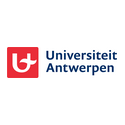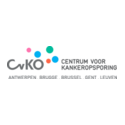In short
The goal of the ScreenUrSelf trial is to increase cervical cancer screening attendance and to check on compliance to follow-up by offering a self-sampling alternative to women who are currently not participating in the organised cervical cancer screening program (defined in this project as un(der)-screened women).
Project description
Patient: In this population-based study we target un(der)-screened women, i.e., women (31-64y) eligible for the Flemish population-based cervical cancer screening program without any cytology/histology/pathological result retrieved from the Belgian Cancer Registry (BCR) for at least the last six years (i.e., two screening rounds). Women who opted out of the screening program, who are pregnant (self-reported), underwent total hysterectomy, have (had) cervical or uterine cancer, or are included in other Centre for Cancer Detection (CvKO) pilot projects are not eligible.
Intervention: The proposed randomised controlled trial (RCT) will be embedded in the Flemish organised cervical cancer screening program, which is coordinated by CvKO under governance of the Flemish government. The goal is to reach women who are eligible but do not participate in cervical cancer screening, by offering two self-sampling methods (first-void urine and vaginal) in an opt-in and -out strategy (total of four interventions) to collect samples for primary high-risk (hr) Human Papillomavirus (HPV) testing, and if positive, reflex 1) cytology on a Pap smear (standard of care) and 2) methylation marker triage (index test).
Comparison: The two control arms include 1) no intervention; and 2) sending (recall) invitation letters to women, inviting them to make an appointment for a Pap smear (i.e., current practise within the organized cervical cancer screening program in Flanders).
Primary outcome: The primary outcome is the actual response rate, i.e., proportions of women that participate in each intervention and in the control arms at 12 months after initiation of the intervention (the intervention being one of six study arms). Response in this project is defined as having a preventive cervical screen exam, either by a self-sample or by a physician-taken Pap smear, at 12 months after initiation of the intervention.
Secondary outcomes:
- Compliance to follow-up after a hrHPV-positive self-sample or Pap smear.
- Preference and attitudes of women regarding self-sampling.
- Differences (if measured) in response rate based on age and socioeconomic status (SES).
- Clinical performance of primary hrHPV testing and reflex methylation marker testing in self-samples.
- Cost and cost-effectiveness outcomes.
Sciensano's project investigator(s):
Service(s) working on this project
Partners






